Introduction of different types of sewing machine
Sewing machines have been the backbone of the manufacturing industry and there are various types of sewing machines. Industrial sewing machines are a separate category, mainly used for mass production in factories. In this blog post, we’ll take a closer look at the different types of sewing machines and their unique features.
Objective of different types of sewing machine
- Learn about the sewing machine
- Learn about sewing machine function
- Learn about different types of stitch
- Lock Stitch
- Chain Stitch
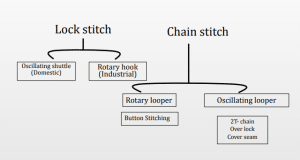
Single Needle Plain machine
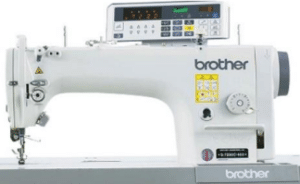
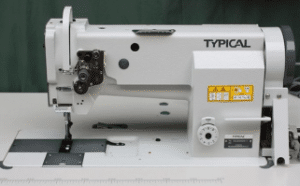
Used For
- Any kind of design stitch
- Label make
- Zipper T/P
- Zipper attach
- Back Neck T/S
Plain machine with a knife (Vertical)

Used For
- Sewing by cutting raw edge
Programmable pattern sewing machine (BAS)
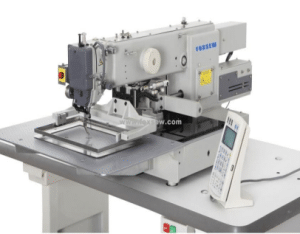
Used For
- Any kind of design stitch
- Attach zipper
- Attach bone with pocket,
- Attach Velcro
- Attach placket of polo shirt
Zigzag machine

Used For
- Any kind of decorative stitch
Chain stitch machine
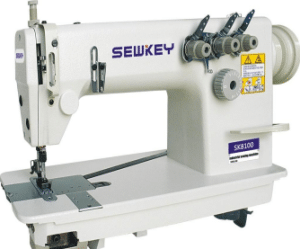
Used For
- Used for joining trouser panels, riser seams, and felled seams in jeans.
Flatlock machine

Used For
- T-shirts/knit sleeves and bottom hems.
- stitching of belt loops in jeans & trousers.
Multi-needle flatlock machine (B/J)
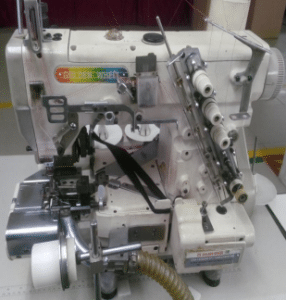
Used For
- waist elastic for bottoms.
- T-shirts/knit sleeves and
- bottom hem
- stitching of belt loops in jeans & trousers.
Overlock machine

Used For
- surging to stop fabric fraying, and for joining 2 or more plies together.
Overlock machine (5-thread)

Used For
- joining panels where seam stretch is critical or joining seams where the security of seam is important.
- Jeans (inside legs) side seams and sleeves on shirts, overalls, etc.
Feed of the arm (F/D)

Used For
- Knitwear, lingerie & undergarments.
Feed of the arm (FOA)
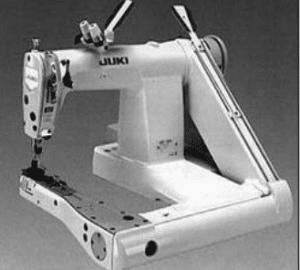
Used For
- The side seam of the basic shirt,
- The side seam of jeans,
- Join the back tape of the T-shirt
Bartack machine

Used For
- To secure stitch for in a maximum stress point of garments
- Used in pocket opening edge, Fly opening.
Kansai machine
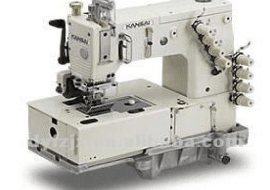
Used For
- Waist belt top stitch
Button holing & attaching

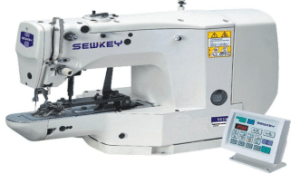
Used For
- Buttonhole and attach
Snap button attaching machine

Used For
- Attach snap button
- Attach eyelet ring
Conclusion
In the garment manufacturing industry, the choice types of sewing machine depends on the operation that needs to be performed. There are several types of sewing machines available, and we have listed some of the basic ones to help you understand them better.
Also Read:
Sewing Machine Parts Name Easy Identification With Pictures
5 Best Sewing Machines for Beginners in 2024: Expert Review
10 Important Sewing Needle Parts Name and Their Functions
FAQs (Frequently Asked Questions)
How many types of sewing machine in garmetn industry?
In the garment industry, there are various types of sewing machines, including domestic sewing machines, industrial sewing machines, and specialized sewing machines such as coverstitch machines, overlock machines, blind stitch machines, and buttonhole machines. These machines cater to different needs and tasks in garment production, ranging from basic stitching to specialized finishes and detailing.
What are the four types of sewing?
The four main types of sewing are:
1. Hand Sewing
2. Machine Sewing
3. Serger Sewing
4. Embroidery
What is industrial sewing machine?
industrial sewing machine is a heavy-duty type of sewing machine used in commercial settings like garment factories. It’s designed to handle high volumes of sewing tasks quickly and precisely, even through thick fabrics. These machines come in different types for various sewing needs and are essential for mass production in the garment industry.


